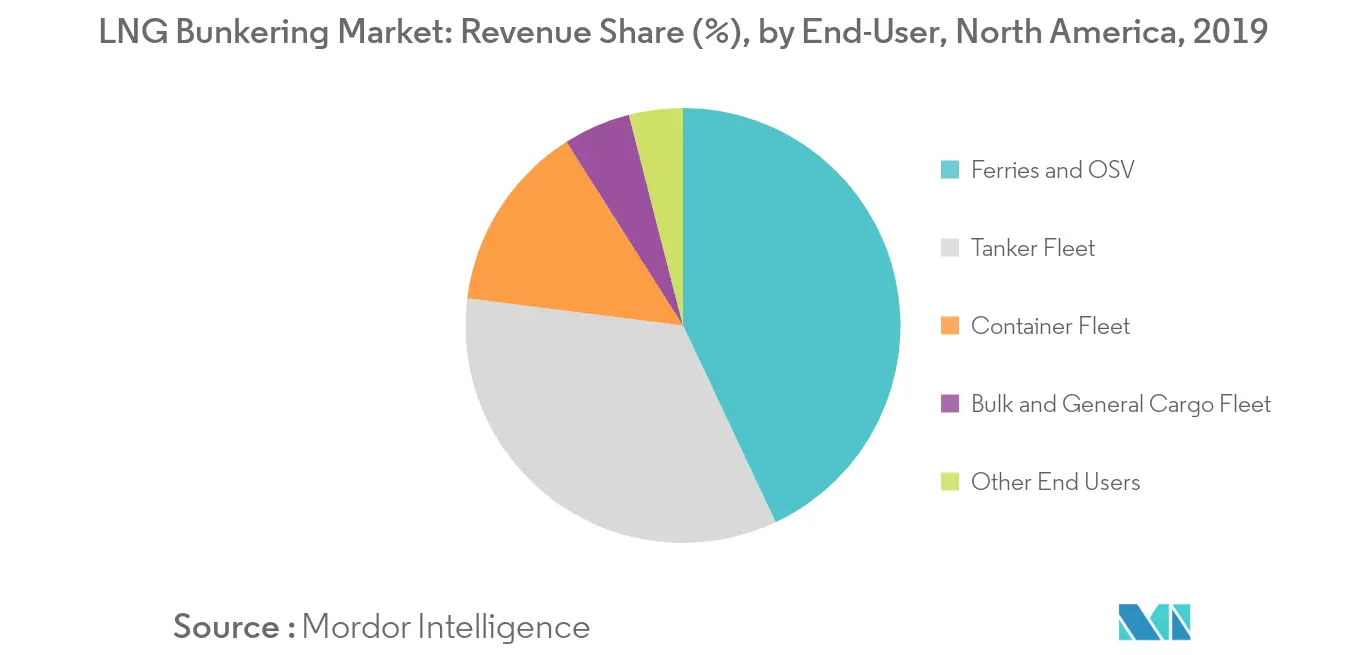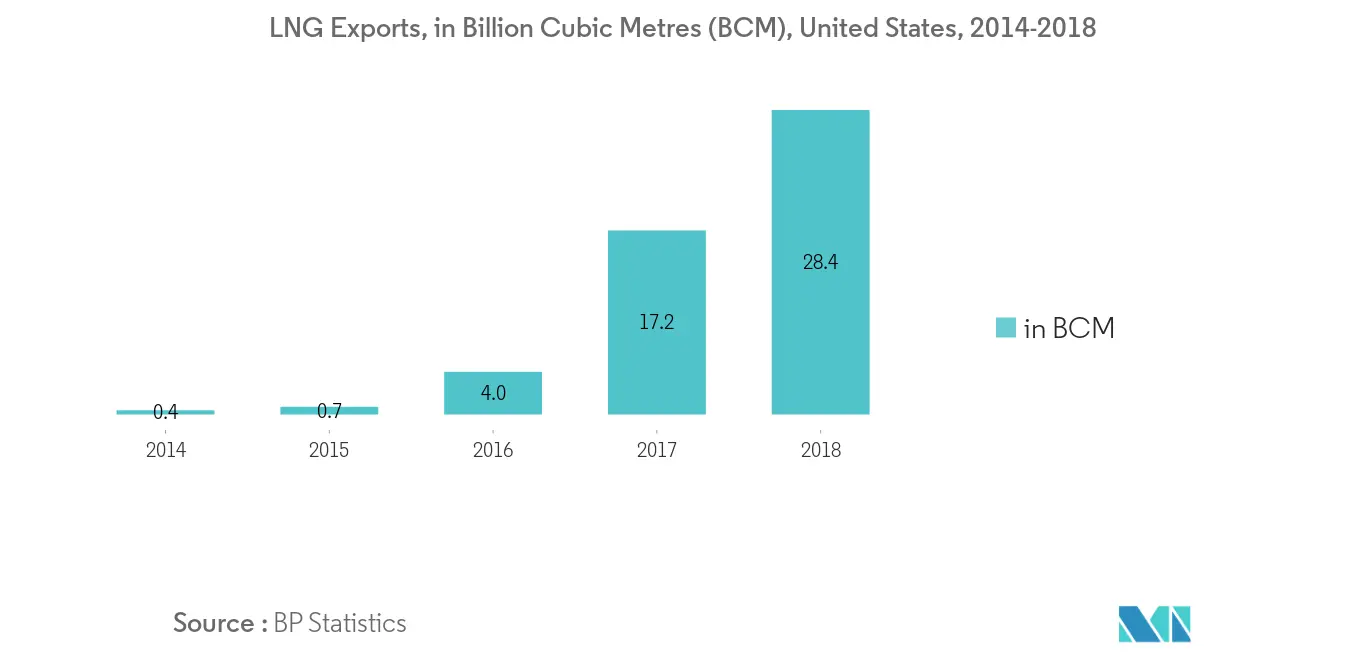Market Trends of North America LNG Bunkering Industry
This section covers the major market trends shaping the North America LNG Bunkering Market according to our research experts:
Ferries and OSV Segment to Dominate the Market
- Ferries are vessels used to carry cargoes across the water. A passenger ferry is used as a water bus or water taxi to travel from one place to another. On the other hand, offshore support vessels (OSV) are required during oil exploration and construction work in offshore locations. Moreover, they help in providing necessary supplies while undertaking exploration, drilling, and construction activities.
- These vessels majorly operate on heavy fuel oil and marine gas oil. However, government regulations regarding emission of sulfur, carbon dioxide, and other pollutants have been encouraging the use of LNG as a fuel in the vessels. In the United States, tighter emission control standards, access to LNG from liquefaction or liquefaction-related storage tanks, and port facilities have facilitated the LNG bunkering infrastructure in the country.
- Moreover, there is an increase in the number of ferries and OSVs on order based on LNG fuel. The increasing retrofitting of ferries with the dual-fuel engines has been driving the demand for LNG bunkering services.
- In March 2019, the Canadian firm, BC Ferries, announced to build up to five new LNG powered ferries, primarily to replace four existing vessels, in order to meet the changing travel demands in the near future. The new ferries are expected to enter service by end of 2020.
- Hence, the increasing number of LNG fueled ferries and OSV is expected to drive the demand for LNG fueled ferries and OSVs in North America during the forecast period.

United States to Dominate the Market
- The United States accounted for the majority of the LNG bunkering market, on account of increase in the LNG demand to reduce carbon footprint in the shipping industry. Bunker fuel is primarily used by vessels, such as bulk and general cargo vessels, tankers, container ships, offshore support vessels, and ferries in the country.
- In 2016, the International Maritime Organization (IMO) decreased the permissible sulfur content in marine fuels to 0.5% from a previous 3.5%, to curb greenhouse gas emissions. The date of implementation was announced as January 1, 2020. Owing to the above-mentioned factors, the US LNG bunkering market is expected to witness growth in the coming years, as LNG is likely to be an economic alternative for marine fuel after IMO's regulation.
- Currently, in the United States, LNG bunkering takes place in Jacksonville, Florida, and Port Fourchon, Los Angeles, with a third facility under development in Tacoma, WA. Bunkering of LNG-fueled cruise ships using barges is planned for Port Canaveral, Florida.
- If LNG producers in the United States can supply a significant share of this market, owing to low LNG production costs, compared to other countries, LNG bunkering could increase the demand for US natural gas production, transportation, and liquefaction. Furthermore, increasing demand can also provide an opportunity for the increase in domestically constructed LNG bunkering barges.
- Moreover, LNG exports from United States has been increasing in the past years, with expansion of existing LNG liquefaction facilities, which is expected to bolster the market.
- Hence, owing to the above mentioned factors, the LNG bunkering market in United States is expected to the largest during the forecast period.


